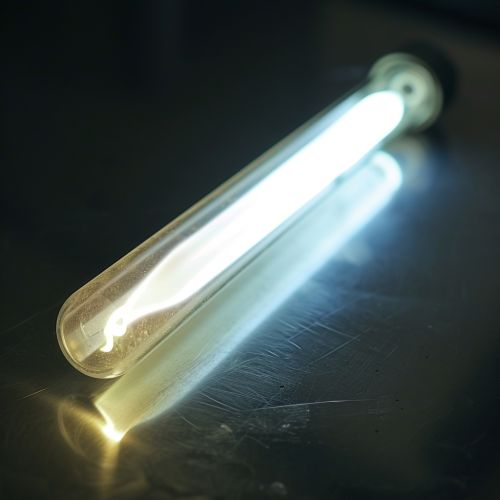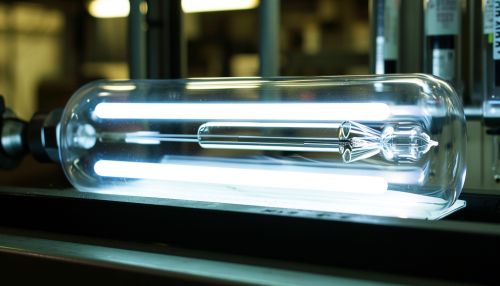Krypton
Introduction
Krypton (from Ancient Greek: κρυπτός, romanized: kryptos "the hidden one") is a chemical element with the symbol Kr and atomic number 36. It is a member of group 18 (noble gases) elements. A colorless, odorless, tasteless noble gas, krypton occurs in trace amounts in the atmosphere and is often used with other rare gases in fluorescent lamps. Krypton is inert for most practical purposes.
History
Krypton was discovered in Britain in 1898 by Sir William Ramsay, a Scottish chemist, and Morris Travers, an English chemist, in residue left from evaporating nearly all components of liquid air. Ramsay was awarded the 1904 Nobel Prize in Chemistry for discovery of a series of noble gases, including krypton.
Characteristics
Physical
Krypton is characterized by several spectral lines (sharp emission or absorption lines) in the visible spectrum. It is one of the products of uranium fission. Solidified krypton is white and crystalline with a face-centered cubic crystal structure, which is a common property of all noble gases.
Chemical
Krypton is highly resistant to chemical reaction; under normal conditions it does not form compounds with other elements. However, the krypton fluoride compound can be synthesized and there are reliable reports of a krypton oxide.
Isotopes
Krypton has numerous isotopes, with atomic masses ranging from 69 to 100. Naturally occurring krypton is made of five stable isotopes and one slightly radioactive isotope, krypton-81. The isotope krypton-81 decays with a half-life of 230,000 years.
Occurrence and production
Krypton is present in the air at about 1 ppm. The atmosphere of Mars contains a little (about 0.3 ppm) of krypton. It can be extracted from liquid air by fractional distillation. The amount of krypton in space is uncertain, because measurement is derived from meteoric activity and solar winds. The first measurements suggest an abundance of krypton in space.
Applications
Due to its high light output in plasmas, krypton is used in many high-powered gas lasers, which work by ionizing the krypton atoms to produce a plasma that emits light. Krypton is also used in some types of photographic flashes used in high-speed photography. Some surgical lasers use krypton mixed with other gases to generate the laser light.
Safety
Krypton is considered to be a non-toxic asphyxiant. Krypton has a narcotic potency seven times greater than air, so breathing an atmosphere containing 50% krypton and 50% natural air would cause narcosis similar to breathing air at four times atmospheric pressure. This would be comparable to scuba diving at a depth of 30 m (100 ft) and potentially could affect anyone breathing it.
See Also


